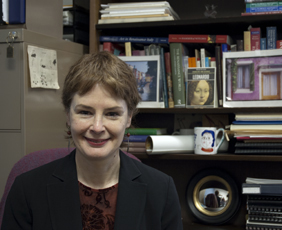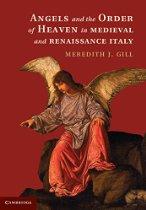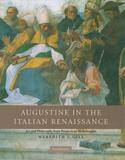Meredith J. Gill

Professor Emerita, Fifteenth- and Sixteenth-Century Italian Art, Art History and Archaeology
Classics
Education
Ph.D., Art History, Princeton University
Research Expertise
Early Modern History
Gender
Visual Culture
Meredith J. Gill is a historian of Italian art and architecture from the late medieval era through the sixteenth century. Her scholarly interests focus on the intersections of art and spirituality, with an emphasis on theology and philosophy.
She is the author of Augustine in the Italian Renaissance: Art and Philosophy from Petrarch to Michelangelo (Cambridge University Press), as well as Angels and the Order of Heaven in Medieval and Renaissance Italy (Cambridge University Press). She has contributed chapters to Rome: Artistic Centers of the Italian Renaissance (ed. Marcia Hall) (Cambridge University Press) and to The Renaissance World (ed. John Jeffries Martin) (Routledge). Among her essays is her study of Guillaume d'Estouteville in The Possessions of a Cardinal: Politics, Piety, and Art, 1450-1700 (eds. Mary Hollingsworth and Carol M. Richardson) (Penn State University Press) and her chapter on the humanist, Lorenzo Valla and the idea of forgery in Rethinking the High Renaissance: The Culture of the Visual Arts in Early Sixteenth-Century Rome (ed. Jill Burke) (Ashgate). She is a co-editor, with Karla Pollmann, of the international volume Augustine Beyond the Book (Brill), a collection of interdisciplinary studies on Augustine's reception.
In 2010, she led two sessions for the National Endowment for the Humanities Summer Seminar, “Re-Mapping the Renaissance: Exchange between Early Modern Islam and Europe” (Center for Renaissance and Baroque Studies, University of Maryland). From 2013, she was co-director, with Neil Fraistat (Director of MITH), of the convening Art History in Digital Dimensions (funded by the Samuel H. Kress Foundation and the Getty Foundation). She is Chair of the Board of the Digital Art History Association (affiliated with the College Art Association).
In her teaching, Professor Gill has concentrated on interdisciplinary themes that address social history, religion, the history of science, and gender in the visual arts. Her articles (appearing in Storia dell'Arte, Renaissance Quarterly, and Zeitschrift für Kunstgeschichte) have focused on French and Spanish patronage in Quattrocento Rome, and on architecture, church decoration, and funerary sculpture. She contributed articles to the Festschrifts of Richard Krautheimer and John Shearman, and was a co-editor of both volumes. Recently, she co-authored (with William E. Wallace) an essay on Simon Vouet’s Saint Jerome and the Angel (National Gallery of Art, Washington, DC), in press with Artibus et Historiae.
She has been a Fellow at Villa I Tatti (The Harvard University Center for Italian Renaissance Studies) and the National Humanities Center, and has been the recipient of a fellowship from the National Endowment for the Humanities. Professor Gill is a member of the advisory board for Renaissance Studies.
Publications
Angels and the Order of Heaven in Medieval and Renaissance Italy
This book examines the theological, philosophical, and artistic identity of angels in medieval and Renaissance times, addressing such themes as the Nine Orders, music-making angels, and conceptions of the afterlife.
Author/Lead: Meredith J. Gill
Read More about Angels and the Order of Heaven in Medieval and Renaissance Italy
Augustine Beyond the Book: Intermediality, Transmediality and Reception
An international collection of interdisciplinary studies on Augustine's reception
Author/Lead: Meredith J. GillNon-ARHU Contributor(s): Karla Pollmann, Ph.D. (1990) in Classics, Ruhr-Universität Bochum, is Professor of Classics at St Andrews University.

This interdisciplinary collection of essays investigates the processes by which Augustine of Hippo's writings were re-invented in other media, including the visual arts, drama and music. Thereby it highlights the crucial role of Augustine's readers in constructing his universal stature.
Augustine in the Italian Renaissance: Art and Philosophy from Petrarch to Michelangelo
This book traces the availability and reception of Augustine (354-430 CE), arguably the most influential Latin author of the Early Christian era, from the fourteenth to the mid-sixteenth century.
Author/Lead: Meredith J. Gill

